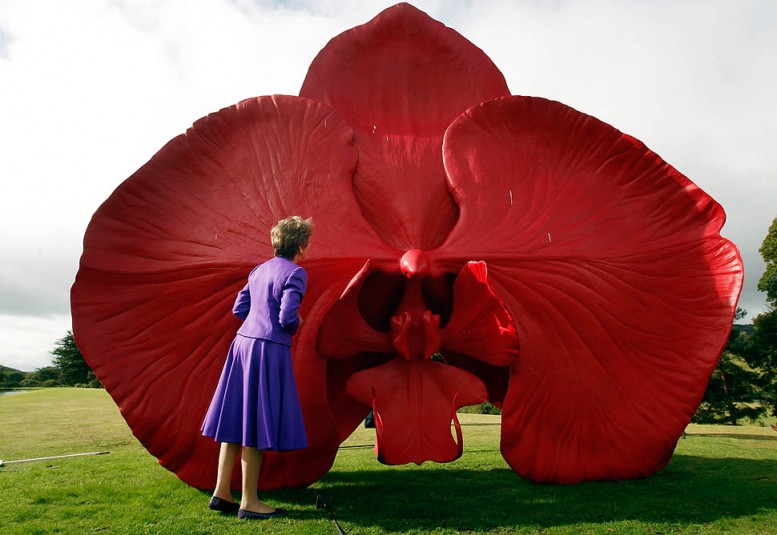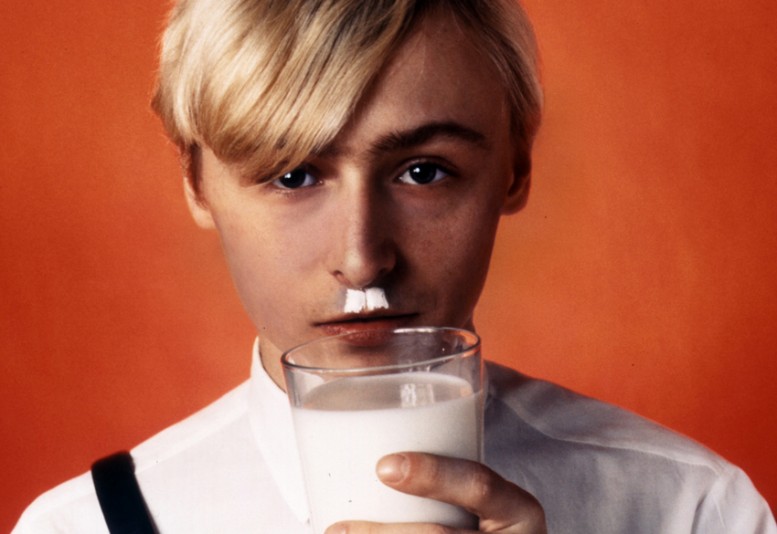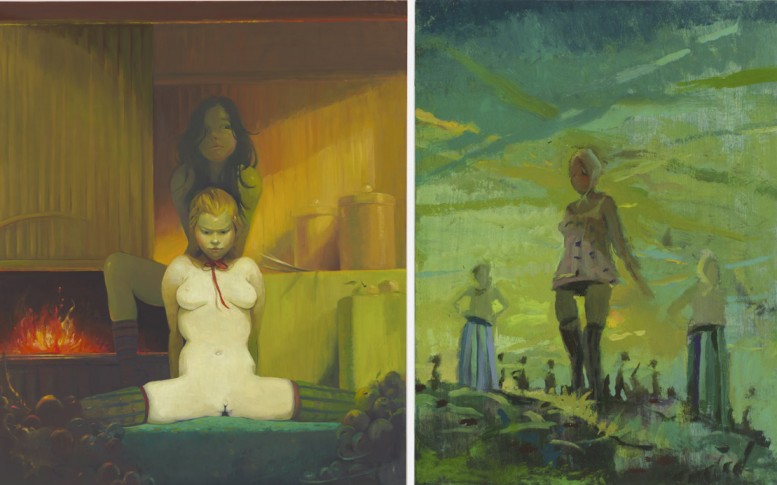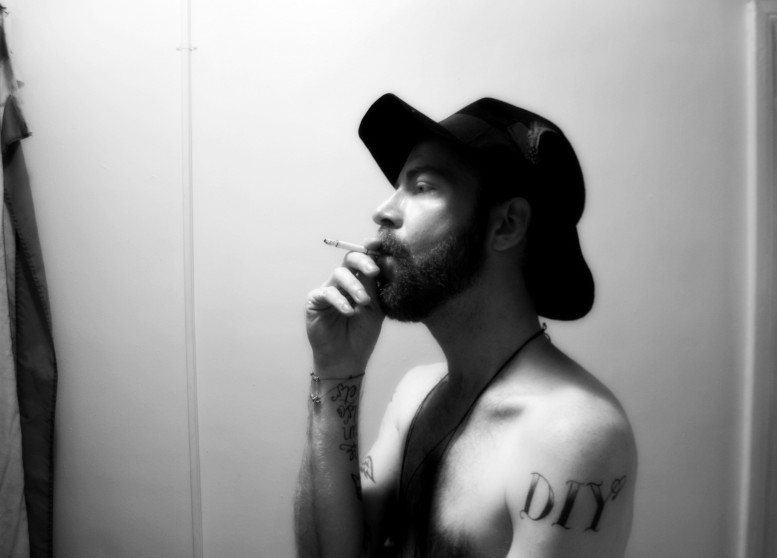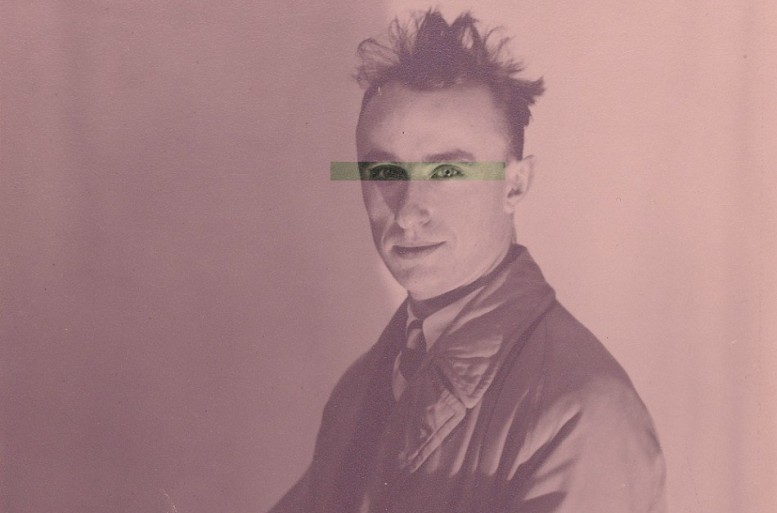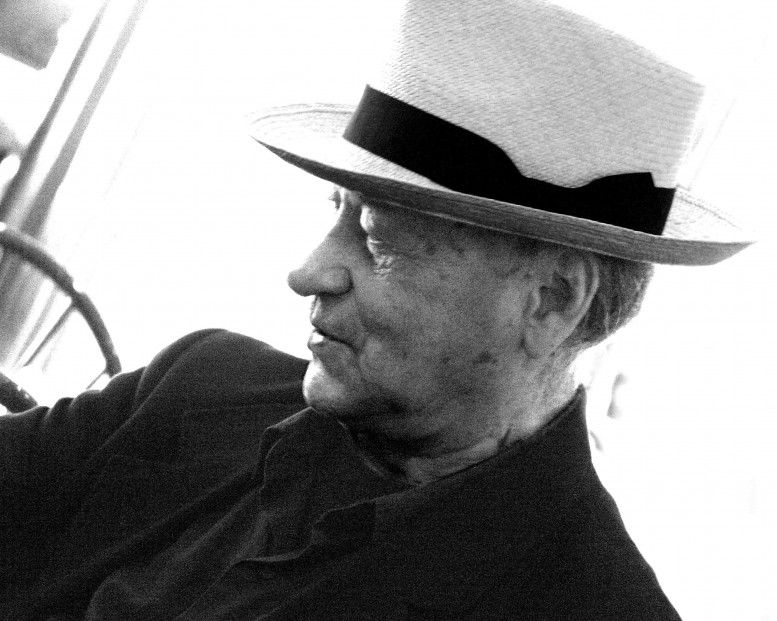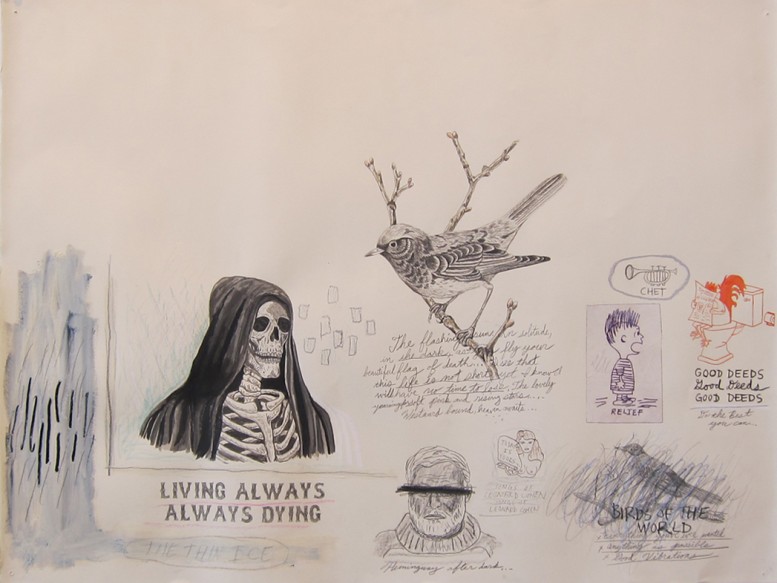
Haute Culture
General Idea was founded in Toronto in 1969 by Felix Partz, Jorge Zontal and AA Bronson. The collective interrogated media image culture through now legendary projects like File magazine, as well as paintings, installations, sculptures, mail art, photographs, videos, ephemera, TV programs and even a beauty pageant. The group’s transgressive concepts and provocative imagery challenged social power structures and traditional modes of artistic creation in ever-shifting ways, until Partz and Zontal’s untimely deaths from AIDS-related causes in 1994. Curated by Paris-based independent curator Frédéric Bonnet, Haute Culture: General Ideais the first comprehensive retrospective devoted to the collective. The exhibition is organized around five themes, each central to the trio’s production: “the artist, glamour and the creative process”; “mass culture”; “architects/archaeologists”; “sex and reality”; and “AIDS." Haute Culture: General Idea is on view until January 1 at the Art Gallery of Ontario.
The Kiss At Turner
Auguste Rodin’s life-size marble sculpture The Kiss (1901-04) will be installed at the Sunley Gallery at Turner Contemporary. On loan from the Tate collection and one of the most iconic images of sexual love, The Kiss was voted the nation’s favorite work of art in a 2003 poll. The embracing couple come from a true thirteenth century story of forbidden love, which was immortalized in Dante’s Inferno and by many artists since. The couple are the adulterous lovers Paolo Malatesta and Francesca da Rimini, who were slain by Francesca’s outraged husband. They appear in Dante’s Inferno, which describes how their passion grew as they read the story of Lancelot and Guinevere together. At the time, the perceived eroticism of Rodin’s sculpture was controversial leading to instances where the work was removed from public view.
New Paintings by Lisa Yuskavage
Over the past two decades, Lisa Yuskavage has developed her own genre of the female nude: lavish, erotic, cartoonish, vulgar, angelic young women cast within fantastical landscapes or dramatically lit interiors. They appear to occupy their own realm while narcissistically contemplating themselves and their bodies. Rich, atmospheric skies frequently augment the psychologically-charged mood, further adding to the impression of theatricality and creative possibility. On view now, David Zwirner gallery presents an exhibition of new paintings by Lisa Yuskavage, at the gallery’s 519 West 19th Street space. This will be the artist’s third solo show since her first exhibition at the gallery in 2006. On view until November 5th.
Rock n' Roll Photography

Rock & Roll music provided the soundtrack to American culture and shifting social dynamics in the late 20th century. While the genre has undergone many shifts since its origination mid-century, Rock & Roll and its outgrowths have continued to define and shape the social relations and culture of future generations. Drawn from the largest private collection of photographs of rock musicians in the United States, Backstage Pass: Rock & Roll Photography now on view at the Currin Museum of Art in New Hampshire, captures the intimate relationship between photographer and musician. Featuring 175 photographs—many rarely seen by the public—this exhibition provides a portal into the musical and cultural history of Rock & Roll, from its development in the 1950s to its influence on the sounds and styles of future generations. Photographs will be on view of artists as disparate as Kurt Cobain to Chet Baker. Backstage Pass: Rock & Roll Photography will be on view until January 7, 2012.
The Art of Playboy
NEW YORK, N.Y.- The Comic Art of Playboy: Over Five Decades of Illustration and Cartoons, more than 85 paintings, illustrations and cartoons that graced the legendary men's magazine - led by pieces like Alberto Vargas' Darling, It's My Hat I Want Your Opinion On, Vargas Girl Playboy Pin-Up from April 1963 - will be the draw for collectors, Oct. 22-23, in New York at The Fletcher-Sinclair Mansion (2 East 79th Street, at 5th Ave.)
NEW YORK: BOUNDARIES OBSCURED
PATRICIA PICCININI, Silicon, fiberglass, human hair, clothing
Haunch of Venison Gallery presents New York: Boundaries Obscured which is on view now. Artists featured in Boundaries Obscured respond to the growing trend of globalization and the blurring of cultural and geographical boundaries as use of technology becomes more prevalent. Major cities and rural enclaves are no longer distinct entities that operate in opposite contexts. Thus the featured artists depict both urban and rural scenes, addressing universal issues such as war, violence, politics, sex and eroticism, drugs, class, science and technology, waste and excess. These works highlight the overwhelming difficulties and/or advantages of being an individual in a relentlessly encroaching mass of information and external pressure. The exhibiting artists represent the world’s global and diversified (yet interdependent) climate. The artists range in age from 32 to 76 years old and hail from a range of countries including Iraq, India, Sierra Leone, Germany and the United States. “By exhibiting a group of artists at different stages in their careers, who come from radically different backgrounds, we intend to create a dynamic dialogue between the artists,” said Steinberger. The exhibition will include a painting by renowned American artist Peter Saul, whose recent solo exhibition at Haunch of Venison received critical acclaim. Saul is celebrated for his politically charged paintings that comment ironically on current events and public figures. Another highlight of the exhibition is German sculptor Günther Uecker’s ‘Aschemensch (Ash Man)’, a seminal painting from the artist’s only figurative series. Uecker created the work in 1986 as a reaction to the Chernobyl catastrophe. The work features an ambiguous human figure engulfed in sporadic black drips of paint, alluding to the radioactive materials that invaded Chernobyl. New York: Boundaries Obscured is on view until November 3 at Haunch of Venison in New York – 550 West 21st Street.
Hunky Dory
"Strange fascination, fascinating me," quoth David Bowie in his song Changes on the album Hunky Dory. Artist, photographer, online magazine editor, and purveyor of arts and culture Christopher Lusher, based in Huntington, West Virginia, is the progenitor of somewhat of an art scene in one of the oldest states and most forgotten states in America. Like the revolutionary abolitionist John Brown, a West Virginian who murdered slave owners and was ultimately hanged for treason, Lusher carries the same rough-hewn spirit of good old fashion men famous by the annals of American history who know the the true nature of freedom and liberty, and certain inalienable rights. Responsible for bringing Harmony Korine's film Trash Humpers to the 2010 Appalachian Film Festival, contributing to Purple Fashion Magazine's Purple Diary, and editing his own online publication Hillbilly Magazine, Lusher proves it is the power of the innate, inexorable, and mysterious spirit of creation that art can be born in any corner of any part of the world. On October 21 Christopher Lusher's solo art exhibition, entitled Hunk Dory, will open at the Blank Gallery in West Virginia.
Text by Oliver Maxwell Kupper for Pas Un Autre
FERNAND LÉGER: A SURVEY OF ICONIC WORKS
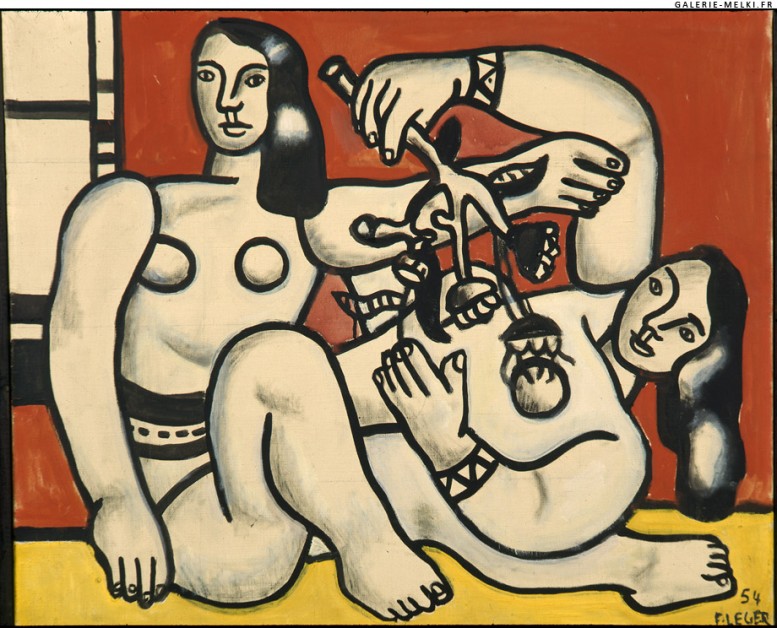

Known for his use of color, bold forms, geometric contrasts, and enduring interest in the working class, French painter Fernand Léger was an artist icon of the 1930s. An exhibition unto itself, a limited-edition volume to be published by Assouline features a curated selection of his most outstanding pieces, hand-glued to each page for a lasting keepsake of Léger’s extraordinary oeuvre.
Lovers from the Hereafter
Sculptor Jean-Marc Laroche shares with us his fantasy of eternal life with the installation, “Lovers from the Hereafter,” featuring intertwining skeletons embracing one another. The installation will be on view at the Museum of Sex in New York beginning October 5th, 2011 and includes two human-sized sculptures made of varnished resin and jointed with an invisible steel framework - an effect which resembles real bones. With regards to the "Lovers from the Hereafter" sculptures, Jean-Marc said, "They are themselves quite joyful and they thumb their noses at death and present the afterlife as a roll in the hay.” Throughout his career as a sculptor, he has created several erotic, sensual works, which have been brought together for this installation. Born in Paris in 1959, Jean-Marc Laroche began his career as a sculptor in the early 1990s.
Postmodernism: Style and Subversion
 Vegas, Venturi, Scott Brown and Associates, 1966
Vegas, Venturi, Scott Brown and Associates, 1966
 Wet Magazine, April Greiman and Jayme Odgers
Wet Magazine, April Greiman and Jayme Odgers
Of all movements in art and design history, postmodernism is perhaps the most controversial. This era defies definition, but it is a perfect subject for an exhibition. Postmodernism was an unstable mix of the theatrical and theoretical. It was visually thrilling, a multifaceted style that ranged from the colorful to the ruinous, the ludicrous to the luxurious. What they all had in common was a drastic departure from modernism’s utopian visions, which had been based on clarity and simplicity. The modernists wanted to open a window onto a new world. Postmodernism, by contrast, was more like a broken mirror, a reflecting surface made of many fragments. Its key principles were complexity and contradiction. It was meant to resist authority, yet over the course of two decades, from about 1970 to 1990, it became enmeshed in the very circuits of money and influence that it had initially sought to dismantle. Postmodernism shattered established ideas about style. It brought a radical freedom to art and design, through gestures that were often funny, sometimes confrontational and occasionally absurd. Most of all, postmodernism brought a new self-awareness about style itself. Postmodernism: Style and Subversion 1970 to 1990 is on view until January 15 at the Victoria & Albert Museum in London.
30 Americans
Xaviera Simmons, One Day & Back Then (Standing), 2007. Courtesy of Rubell Family Collection, Miami.
30 Americans is a wide-ranging survey of work by many of the most important African American artists of the last three decades. Selected from the Rubell Family Collection, the exhibition brings together seminal figures such as Jean-Michel Basquiat and David Hammons with younger and emerging artists such as Kehinde Wiley and Shinique Smith. Often provocative and challenging, 30 Americans focuses on issues of racial, sexual, and historical identity in contemporary culture. It explores how each artist reckons with the notion of black identity in America, navigating such concerns as the struggle for civil rights, popular culture, and media imagery. At the same time, it highlights artistic legacy and influence, tracing subject matter and formal strategies across generations. 30 Americans consists of 76 paintings, sculptures, drawings, photographs, and videos, and includes spectacular works of art such as Leonardo Drew’s massive cotton and wax sculpture Untitled #25, several of Nick Cave’s exuberant Soundsuits, and a large-scale silhouette by Kara Walker. On view October 1 to February 12, 2012 at the Corcoran Art Gallery in Washinton, DC.
Alina Szapocznikow: Sculpture Undone
On view now at the Wiels contemporary art center in Brussels is an expansive survey of little known Polish sculptor Alina Szapocznikow (1926-1973) which coincides with the Polish presidency of the European Union and is one of the first major solo exhibitions of the artist's work outside of Poland. It concentrates on her most experimental period from the 1960s and 1970s, before her untimely death at age 47. As a Holocaust survivor who began working in the post-war period in a rather classical, figurative manner, her later experimentation and re-conception of sculpture left behind a legacy of provocative objects - at once sexualized, visceral, humorous, and political - that sit uneasily between Surrealism, Nouveau Réalisme, and Pop Art. Her tinted polyester-resin casts of her lips and breasts transformed into quotidian objects like lamps or ashtrays, her spongy polyurethane forms often embedded with casts of bellies or live grass, and her construction of resin sculptures that incorporate found photographs remain as remarkably biting, visionary, and original today as when they were first made. The exhibition features extensive archival materials as well as more than 100 artworks, including drawings and photography alongside Szapocznikow's sculpture and object-making. On view until January 8, 2012.
[HARMONY KORINE X PROENZA SHOULER] Snowballs
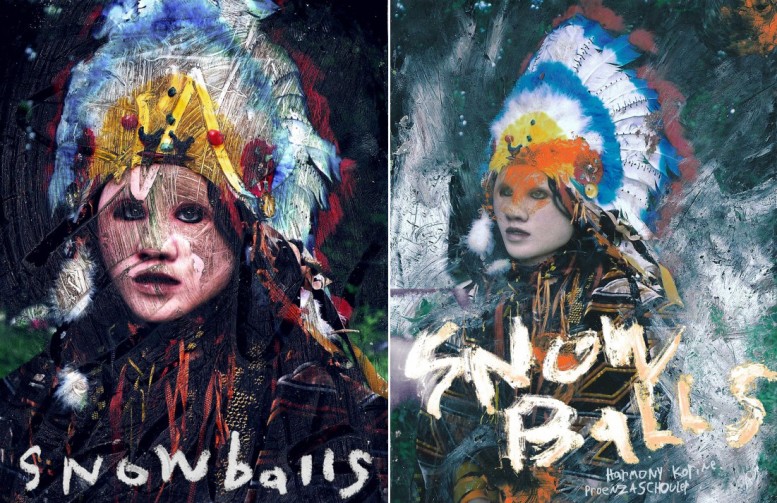
Harmony Korine teams up for a second time with Proenza Shouler for a short film, entitled Snowballs, to be premiered today on the Proenza Shouler website.
Double Solitaire
The Davis Museum at Wellesley college presents Double Solitaire: The Surreal Worlds of Kay Sage and Yves Tanguy, the first major touring exhibition to explore the dynamic exchange of ideas that shaped the astonishing landscapes of these Surrealist artists. This groundbreaking exhibition, which features approximately 25 paintings along with selected ephemera by each artist, provides unprecedented access to the couple’s intertwined artistic and personal lives. Sage and Tanguy were inseparable throughout their 15-year marriage, sharing adjoining studios in Woodbury, CT and communicating only in French until Tanguy’s untimely death in 1955. As Karen Rosenberg writes in the New York Times, this “fascinating” exhibition “intently explores the couple’s sinister dreamscapes of polymorphous pebbles (his) and menacing monoliths (hers).” Both artists sought to create paintings that the French poet André Breton called “peinture-poésie,” a style influenced by poetry and dream-like imagery. Double Solitaire: The Surreal Worlds of Kay Sage and Yves Tanguy is on view Oct. 19, 2011 - Jan. 15, 2012 - 106 Central Street Wellesley, MA, 02481
This Side of Paradise
From the pages of Jonas Mekas diary: “Unpredictably, as most of my life’s key events have been, for a period of several years in the late 60s and early 70s, I had the fortune to spend some time, mostly during the summers, with Jackie Kennedy’s and her sister Lee Radziwill’s families and children. Cinema was an integral, inseparable, as a matter of fact, a key part of our friendship. The time was still very close to the untimely, tragic, death of John F. Kennedy. Jackie wanted to give something to her children to do, to help to ease the transition of life without a father. One of her thoughts was that movie camera would be fun for the children. Peter Beard, who was at that time tutoring John Jr. and Caroline in art history, suggested to Jackie that I was the man to introduce the children to cinema. Jackie said yes. And that’s how it all began. I bought them a very easily operable 16mm movie camera, and even wrote a “mini-textbook” suggesting some simple movie exercises…The images in the exposition, with a few exceptions, they all come from the summers Caroline and John Jr. spent in Montauk, with their cousins Anthony and Tina Radziwill, in an old house Lee rented from Andy Warhol, for a few summers. Andy himself spent many of his weekends there, in one of the cottages, as did Peter Beard, whom the children had adopted almost like their older brother or a father they missed. There were summers of happiness, joy and continuous celebrations of life and friendships. These are ‘Little Fragments of Paradise.’ " Tomorrow night marks the opening of “This Side of Paradise,” an exhibition of photo prints taken from original 16mm film from Jonas Mekas’ celebrated film “This Side of Paradise: Fragments of an Unfinished Biography” (1999). The exhibition will mark the first time these rare and personal images of the Kennedy and Radziwill families are on view in NYC in their entirety. Opens September 24 at the Agnès B Gallerie Boutique - 50 Howard Street New York, NY.
David Byrne's Tight Spot
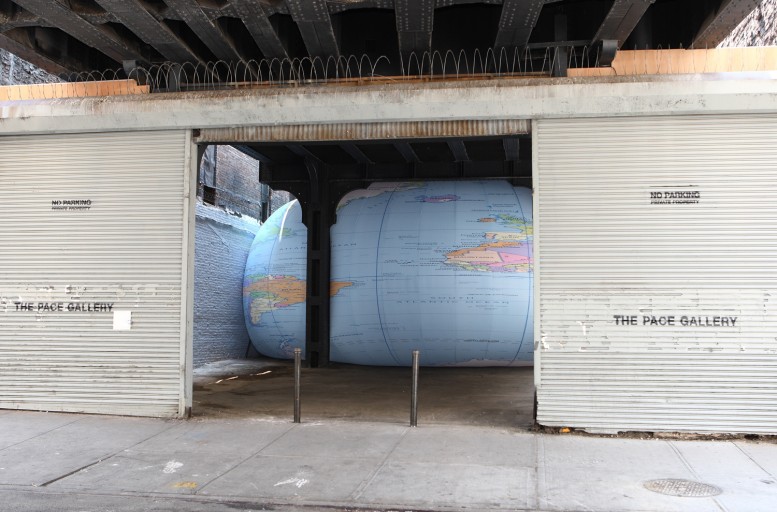 © David Byrne – Photo by: G. R. Christmas / Courtesy The Pace Gallery
© David Byrne – Photo by: G. R. Christmas / Courtesy The Pace Gallery
Venerable genius, most famous as the front man for The Talking Heads, David Byrne inflates a giant globe beneath the High Line at the Pace Gallery in New York for his piece entitled Tight Spot. On view until October 1 - 508 West 25th Street.
Blooming in the Shadows

Contemporary Chinese art has taken the art world by storm in the last decade through heralded museum exhibitions, well-read publications, and heavily attended art auctions. However, even with all this attention, few exhibitions have asked the question of how, against the background of thirty-five years of Socialist Realism, this internationally-oriented artwork suddenly appeared and why it captured the attention of the international art market. Blooming in the Shadows: Unofficial Chinese Art, 1974 –1985 at the China Institute in New York will introduce the work of three unofficial Chinese art groups who worked in this vein: the No Names, the Stars, and the Grass Society, all of which arose following the end of the Cultural Revolution and helped launch the avant-garde movement in China. These artists pursued creatively diverse paths to personal artistic freedom under the harsh political circumstances of the time. Blooming in the Shadows will examine work produced by these three significant groups of young artists in the critical decade after the end of the Cultural Revolution leading up the Communist Party’s 1985 decision to allow modern artistic practices. On view until December 11 at the China Institute – 125 East 65th Street, New York.
Beyond Limits
